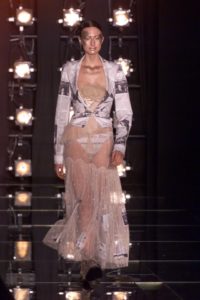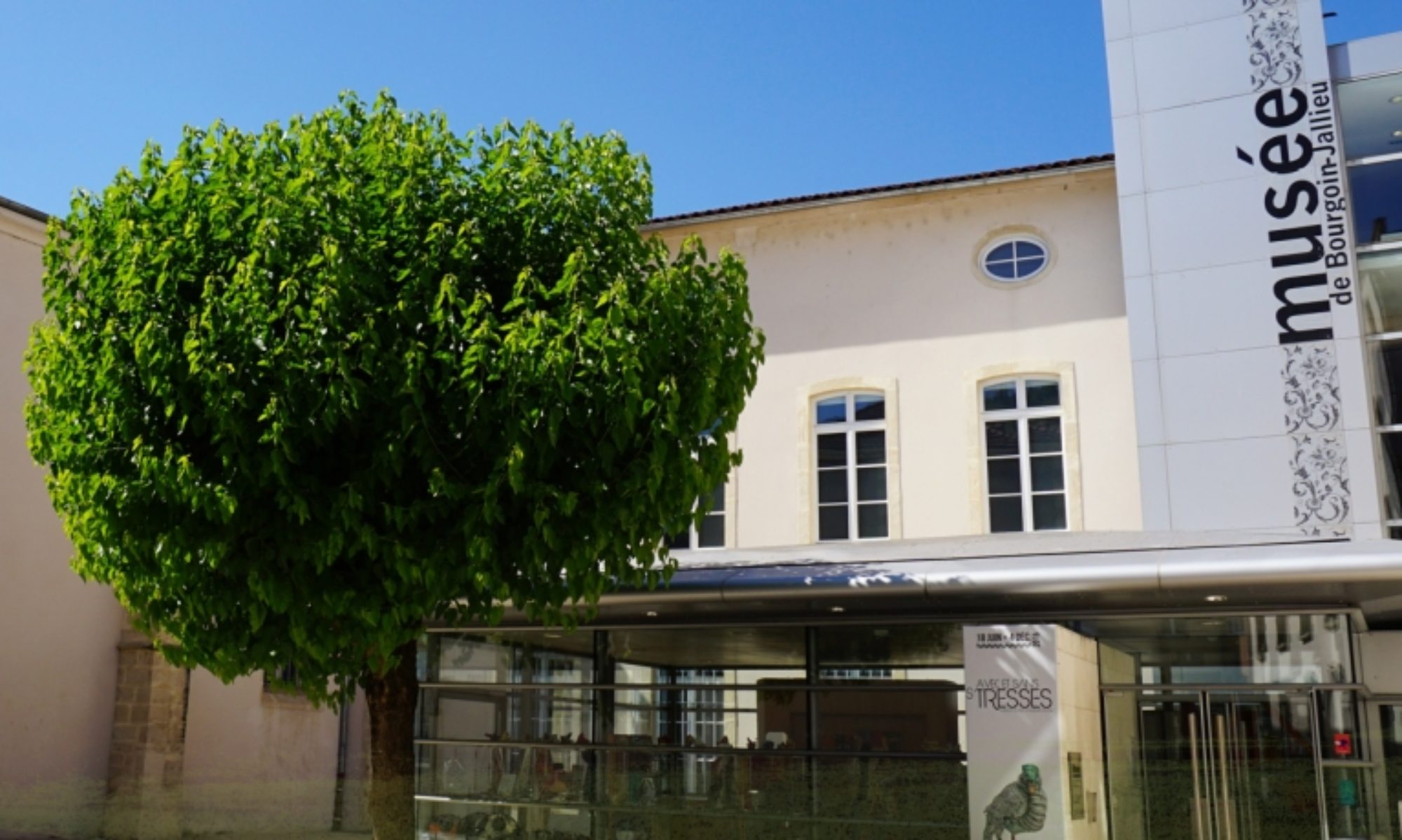This Christian Dior designer piece was acquired by the museum at the auction of French fashion designer Alexis Mabille’s private collection on October 9, 2015 in Lyon, with the support of Holding Textile Hermès (HTH) and the Regional Museum Acquisition Fund (FRAM), headed by the DRAC and the Regional Council.
This piece is a testament to the links between the textile companies of Nord-Isère and the luxury and fashion industry. The fabric of the jacket was flat-screen printed by Établissements Mermoz, while the engraving of the screens was carried out by Établissements Piolat, both of which were based in Bourgoin-Jallieu at the time. The printing work began on February 18, 2000, and production continued through December of that year, which is an impressive achievement for a haute-couture garment.
The jacket
The jacket, composed of several different fabrics (silk twill and taffeta, cashmere, unbleached cotton, and goatskin) features five hues: a fine black for the lettering, a heavy black, a dark gray, a medium gray, and a light gray for the shading. The backdrop of the fabric is ecru rather than white in order to produce a newspaper effect.
The newspaper pattern is based on articles from the Times. These are mock articles about Dior and John Galliano. It also features photographs of the designer, Christian Dior, and the Queen of England, as well as photographs of fashion shows and drawings of iconic pieces from the house of Dior.

Look 29 from the ready-to-wear fashion show, fall-winter 2000 © JB Villareal / Shoot Digital
The House of Dior
The House of Dior was founded in 1947 by Christian Dior (1905-1957). Born into a well-to-do family from Normandy, he began his professional career in 1928 as director of a contemporary art gallery in Paris. The gallery closed in 1934, and, at the encouragement of his friends, Christian Dior embarked on a career as a fashion designer. After selling a few sketches of dresses and hats to famous milliners, he was hired by Lelong in 1941, before creating his own house in 1947 at the now iconic address of 30 avenue Montaigne, Paris.
He launched his first collection in February 1948. It was a huge success, largely due to the celebrated “figure 8” line, immediately dubbed the New Look. This style is characterized by slim-fitting jackets with rounded shoulders and full skirts that fall below the knees. This show, one of the most important in the history of fashion, revolutionized the conventions of femininity and marked the birth of the Dior legend. By his untimely death in 1957, Christian Dior had become the most famous couturier of his time, having outfitted the likes of movie stars and the Duchess of Windsor. The future of his haute couture house is secure, and it remains one of the most renowned and prestigious names in the world of fashion today.
John Galliano
John Galliano was born on November 28, 1960 in Gibraltar, before moving to London at the age of 6. During his teenage years, he studied drawing at East London College, then joined Saint Martin’s School of Art, a necessary step for any Englishman hoping to enter the fashion world. At the same time, he worked as a dresser at the National Theatre, which helps account for his eccentricity and enduring taste for period costume.
He joined Dior on October 4, 1996 as artistic director. His first creation was a babydoll dress worn by Princess Diana for the inauguration of the exhibition celebrating Dior’s 50th anniversary, held at the Metropolitan Museum of Art (MET) in New York on December 6, 1996. The following year, he presented his first collection. Often described as a “genius” and considered one of the most influential designers of his generation, John Galliano revolutionized and reinvented the image of the brand, with a series of collections and extravagant shows that made a lasting impression, such as the “Bums” collection, which created a controversy in 2000. But in 2011, following a scandal, he was dismissed and his career came to a grinding halt. Between his first collection in 1997 and his last, the turnover of Dior Couture increased fourfold, and its number of stores tenfold.
After a period of isolation and therapy, he returned to the world of fashion and has been the artistic director of Maison Martin Margiela since October 2014.

